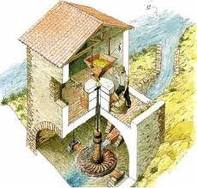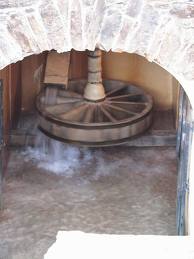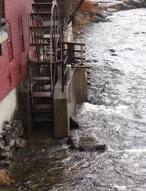History Continued
- Development of the Horizontal water mill, at some point around 200-100 BC the concept of using the power of flowing water to rotate a rotary quern, lead to the development of what is called a Norse Wheel. There is some controversy of where and when this actually occurred. Some sources indicate that it was developed in Greece ~ 100 BC due to text written by Antipater of Thessalonica. However others argue that there is evidence that the Antipater who wrote about the water wheel was a different Antipater who lived around 200 BC in Sidon. The area around Sidon is known for its pottery wheels and also has steep mountain streams which have high energy water flow, which is needed for the Norse Wheel. It is theorized that the jump from the pottery wheel to the Norse Wheel was a plausible connection and thus the invention of the horizontal water wheel was made.
- First Vertical Water Mill after the development of gearing using the concept of the Noria and the use of gears allowed for a more efficient wheel to be turned vertically in the current of the water and the gears allowed the transfer of power from the horizontal axle to the vertical rotary quern. The first vertical wheels were of the undershot configuration which means that the paddles of the wheel set down in the current of the stream turning at the speed of the river current, which meant that the wheel would turn according to the rise and fall of water currents without much control.


